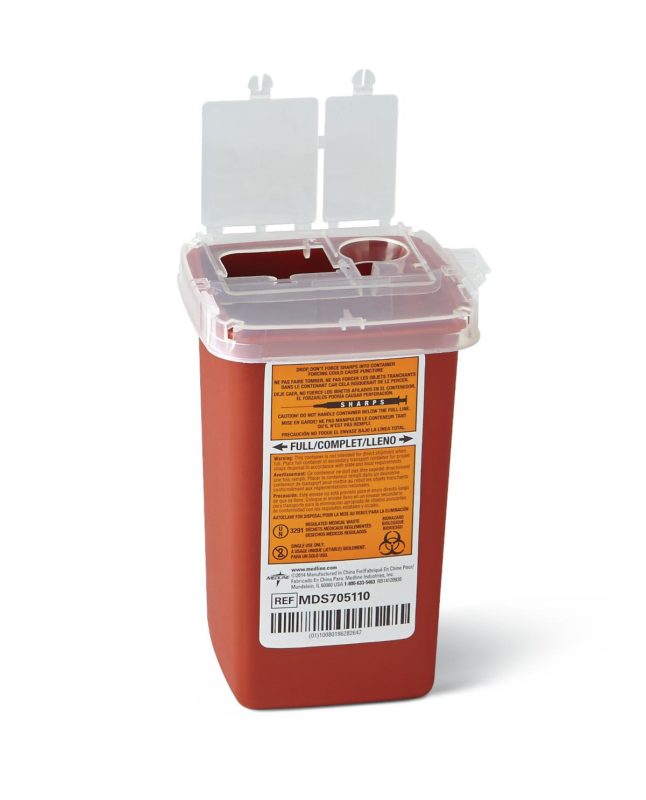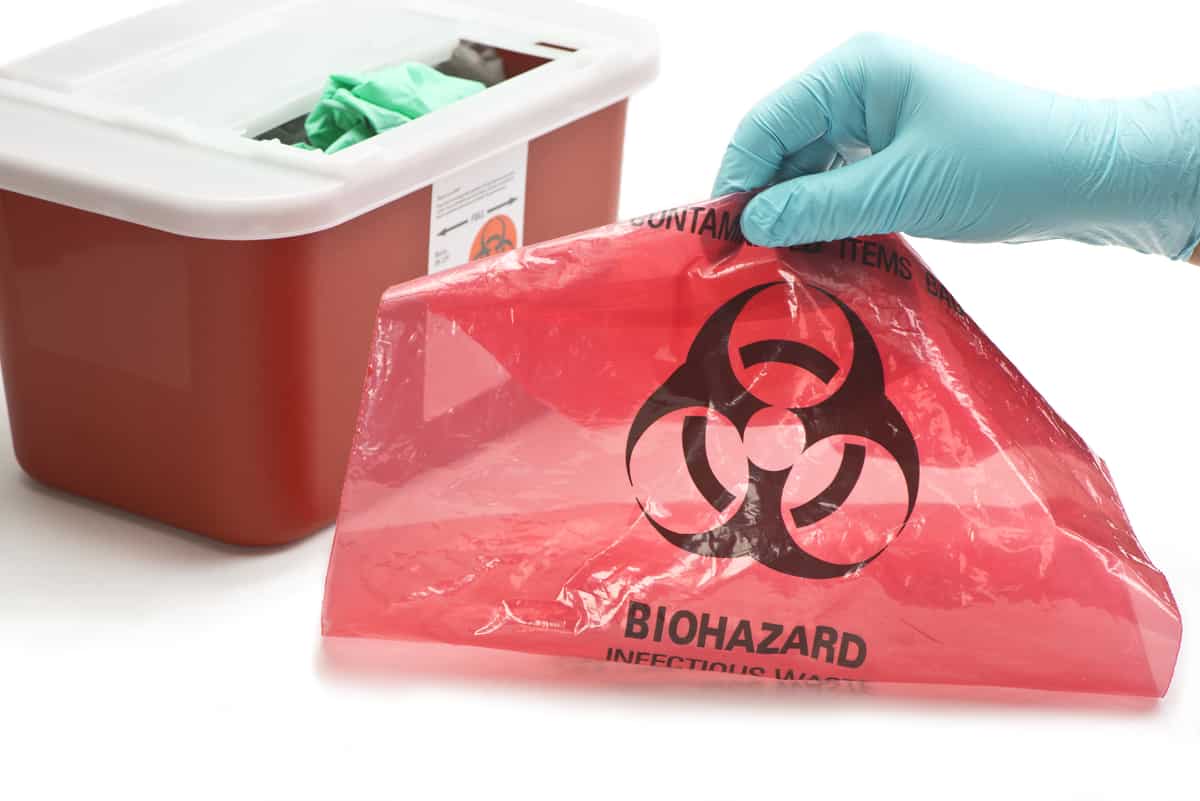Defending Health: Revealing the Significance of Professional Medical Waste Removal
Minimize Costs and Make Best Use Of Safety And Security: Effective Medical Garbage Disposal Approaches
Reliable medical waste disposal techniques are critical for health care centers to optimize and lessen costs safety and security. By implementing correct segregation and classification, efficient packaging and labeling, safe transport and handling, effective treatment and disposal methods, and conformity with governing guidelines, healthcare facilities can make sure the accountable and safe monitoring of medical waste.

Correct Partition and Classification
Proper partition and categorization are critical components of effective medical waste disposal strategies, making certain the security of medical care workers, the general public, and the setting - medical waste removal services. medical waste disposal services with WasteX. By dividing different sorts of medical waste at the factor of generation, healthcare centers can minimize the danger of cross-contamination and possible harm to people and environments
One of the key consider correct segregation is the identification and category of medical waste. This includes categorizing waste into various teams, such as infectious, dangerous, contaminated, or pharmaceutical waste. Each classification calls for specific handling, storage, and disposal approaches to stop any kind of negative results on human wellness and the setting.
Moreover, correct partition also consists of the usage of color-coded tags and containers to plainly recognize and distinguish the various kinds of medical waste. This assists health care employees and waste administration personnel to easily acknowledge and handle the waste suitably. Red containers may be used for transmittable waste, while yellow containers may be designated for dangerous waste.
Along with segregation, correct categorization likewise involves the proper product packaging and control of clinical waste. This ensures that waste is securely kept and transferred without positioning any type of threats to individuals or the setting. Making use of puncture-resistant and leak-proof containers, as well as effectively securing and labeling them, aids to avoid any type of unintended direct exposure or release of dangerous materials.
Efficient Product Packaging and Labeling
Efficient product packaging and labeling play an essential function in ensuring the secure and effective disposal of medical waste. Proper packaging is necessary to avoid leakage, damage, or splilling during transportation and handling. It aids to decrease the danger of contamination and protects healthcare employees, waste monitoring personnel, and the atmosphere from prospective threats.
Medical waste ought to be packaged in tough and watertight containers that are resistant to pierce and breakage. These containers should be effectively sealed to avoid any kind of leak. Additionally, the packaging ought to have the ability to stand up to the conditions of transport, including temperature variants and rough handling.
Identifying is similarly vital as it supplies vital details about the materials of the waste and any type of potential dangers connected with it. The tags should include the name of the health care center, the kind of waste, and any kind of special delivery directions. Standardized and clear labeling makes sure that waste management personnel can conveniently determine and take care of the waste properly.
Efficient packaging and labeling likewise help in the appropriate segregation and categorization of clinical waste. Clear labeling enables very easy recognition of different waste streams, such as transmittable waste, sharps, or pharmaceutical waste. This helps in simplifying the disposal process and making certain that the waste is treated or disposed of according to regulatory guidelines.
Safe Transport and Handling
Making certain the safe transportation and handling of medical waste is of utmost value in order to protect against any type of prospective wellness and ecological dangers. Clinical waste, such as sharps, infected materials, and pharmaceutical waste, should be properly packaged and managed to minimize the risk of exposure to hazardous compounds and pathogens.
Moving clinical waste needs conformity with strict policies and standards set by local authorities and ecological firms. These policies intend to protect the health and wellness of workers entailed in waste administration and prevent the launch of dangerous materials right into the setting.
To guarantee risk-free transportation, clinical waste needs to be placed in leak-proof and puncture-resistant containers that are correctly secured and labeled. These containers must be protected in such a way that protects against spills or damage throughout transportation (medical waste removal). Additionally, it is crucial to make use of specific lorries outfitted with her comment is here suitable security functions to move clinical waste. These lorries must have sufficient ventilation and be designed to avoid leakage or contamination.
Taking care of clinical waste also needs appropriate training and adherence to security procedures. Personnel involved in the handling of clinical waste should wear ideal individual safety tools (PPE) such as handwear covers, dress, and masks to lessen the risk of direct exposure. They should additionally follow rigorous health practices to avoid the spread of infections and guarantee the secure disposal of waste.
Efficient Treatment and Disposal Techniques
Implementing proper therapy and disposal methods is critical in handling clinical waste effectively and minimizing possible health and wellness and ecological dangers. Clinical waste, which consists of sharps, contagious materials, chemicals, and pharmaceuticals, can present substantial hazards otherwise handled and thrown away correctly. There are a number of therapy and disposal approaches available that comply with governing guidelines and promote secure techniques.
One common method is incineration, which company website includes shedding the waste at high temperatures. Incineration works in damaging pathogens and minimizing the quantity of waste, however it can release dangerous pollutants right into the air if not properly controlled. Consequently, it is essential to make use of modern-day incinerators outfitted with exhaust control modern technologies.
An additional technique is autoclaving, which uses heavy steam and stress to sanitize the waste. Autoclaving is effective in eliminating virus and reducing the volume of waste, but it requires cautious monitoring and upkeep to guarantee appropriate performance. The decontaminated waste can then be securely thrown away in a land fill.
Chemical therapy is an additional choice, which entails making use of disinfectants or other chemicals to neutralize virus. This approach is commonly utilized for fluid waste, such as lab specimens. Nevertheless, it is very important to make use of ideal chemicals and comply with correct procedures to make certain efficient treatment and protect against environmental contamination.

Compliance With Regulatory Standards
Following governing guidelines is vital in ensuring proper compliance with clinical waste disposal methods. These standards are put in location to shield public health and wellness, prevent environmental contamination, and keep workplace safety. Compliance with regulatory standards is important for health care centers, as non-compliance can lead to penalties, penalties, and reputational damages.
Regulative standards describe the appropriate handling, storage space, transport, and disposal of clinical waste. These guidelines likewise hop over to these guys deal with the partition of different waste streams, such as sharps, infectious waste, and pharmaceutical waste.
To keep compliance, medical care facilities ought to develop detailed waste management programs that include personnel training, regular audits, and recurring tracking. It is vital to keep current with any adjustments or updates to regulatory standards, as techniques may advance with time. By staying informed and carrying out correct methods, medical care facilities can lower the capacity for regulative violations and safeguard the wellness and safety of their personnel, people, and the bordering neighborhood.
Conclusion
Finally, carrying out reliable clinical garbage disposal techniques is crucial for optimizing and decreasing costs safety and security. Appropriate partition and classification, effective packaging and labeling, safe transport and handling, and reliable therapy and disposal methods are necessary steps to make sure conformity with regulative standards. medical waste removal near me. By sticking to these approaches, health care facilities can protect the atmosphere and public wellness while likewise decreasing financial problems related to medical waste management
By applying proper segregation and classification, efficient packaging and labeling, safe transportation and handling, reliable therapy and disposal approaches, and compliance with governing guidelines, health care facilities can guarantee the liable and safe management of medical waste. Red containers might be made use of for transmittable waste, while yellow containers may be designated for dangerous waste.
Standard and clear labeling makes certain that waste management workers can conveniently recognize and take care of the waste properly. (medical waste disposal services with WasteX)
Clear labeling allows for very easy recognition of various waste streams, such as infectious waste, sharps, or pharmaceutical waste. These guidelines likewise resolve the partition of different waste streams, such as sharps, contagious waste, and pharmaceutical waste.